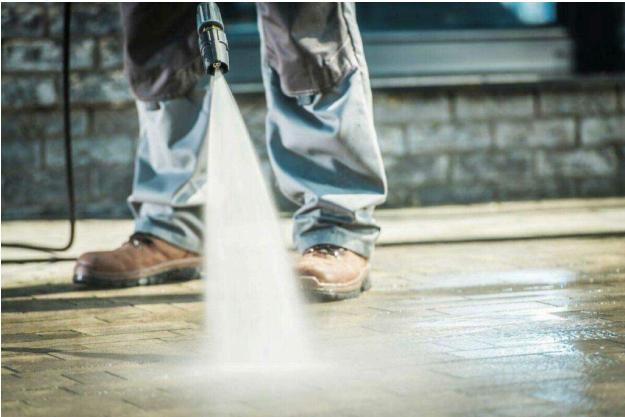Pressure Washing Mistakes That Drain Your Wallet and How to Avoid Them

Pressure washers are workhorses on any jobsite, but if used improperly, they can quickly become one of the most expensive tools in your trailer.
At LNI Equipment, we work with contractors every day who rely on their machines to run smoothly and consistently. That’s why we’re breaking down the most common (and preventable) pressure washer mistakes that cost professionals money.
Whether you're new to pressure washing or just need a quick refresher, this guide will help you protect your investment and stay job-ready.
1. Running Without a Water Source
You’d be surprised how many machines are damaged from one simple oversight: forgetting to hook up the water before starting.
When a pressure washer runs dry, even for a minute or two, the pump can overheat and seize. That means you're facing a rebuild or total replacement.
How to avoid it:
- Always double-check that your water line is connected and flowing before starting
- Prime the system and bleed air out before spraying
- Ensure the water source meets your unit’s GPM rating
2. Letting It Run in By-Pass Too Long
When you release the trigger but leave the engine running, the unit enters by-pass mode, circulating water internally. This water heats up fast.
Allowing the machine to run in by-pass mode for more than 2 to 5 minutes can overheat the pump seals and damage internal components.
How to avoid it:
- Turn the engine off during breaks
- Install a thermal relief valve (available at LNI) to automatically release overheated water
- Train all team members to follow proper start and stop sequences
3. Cavitation (Air in the Pump)
Cavitation occurs when your machine tries to pull more water than it’s being fed, often because of a low-flow hose or an inlet leak. You’ll notice a hammering or rattling sound in the pump, along with erratic pressure. If left unchecked, cavitation will cause severe pump damage over time.
How to avoid it:
- Use a buffer tank if water flow is inconsistent
- Check inlet fittings, garden hoses, and seals regularly
- Match your water source flow rate to your pressure washer’s GPM requirement
4. Skipping Winterization
Water expands when it freezes. If water is left inside your pump, it can crack the housing or valves overnight.
Even a small amount of residual water in the pump can cause hundreds of dollars in damage during cold weather.
How to avoid it:
- Flush the system after use when working in cold temperatures
- Use pump saver or antifreeze to protect internals
- Store your pressure washer in a heated space if possible
5. Poor Lubrication Practices
Your pressure washer’s pump needs oil, just like an engine. Low or dirty oil will lead to overheating, friction, and eventual pump failure.
We see too many pumps fail because the oil level wasn’t checked or changed after break-in.
How to avoid it:
- Check the oil level before every job
- Use only non-detergent pump oil as specified in your manual
- Change the oil after break-in and then every 50 hours (or per manufacturer’s instructions)
Final Thoughts: Protect Your Investment With Smarter Operation
A professional-grade pressure washer is designed to last, but only when maintained properly. Most costly breakdowns happen because of simple operator errors that could have been avoided.
At LNI Equipment, we’re committed to helping you get the best performance out of your gear.
Need Help or Replacement Parts?
We offer:
- Replacement pumps, valves, and hoses
- Thermal relief valves, pump oil, and fittings
- Expert advice from real pros who use this equipment in the field
Visit us in Sayreville, NJ
LNI Equipment — Built for Contractors Who Expect More
